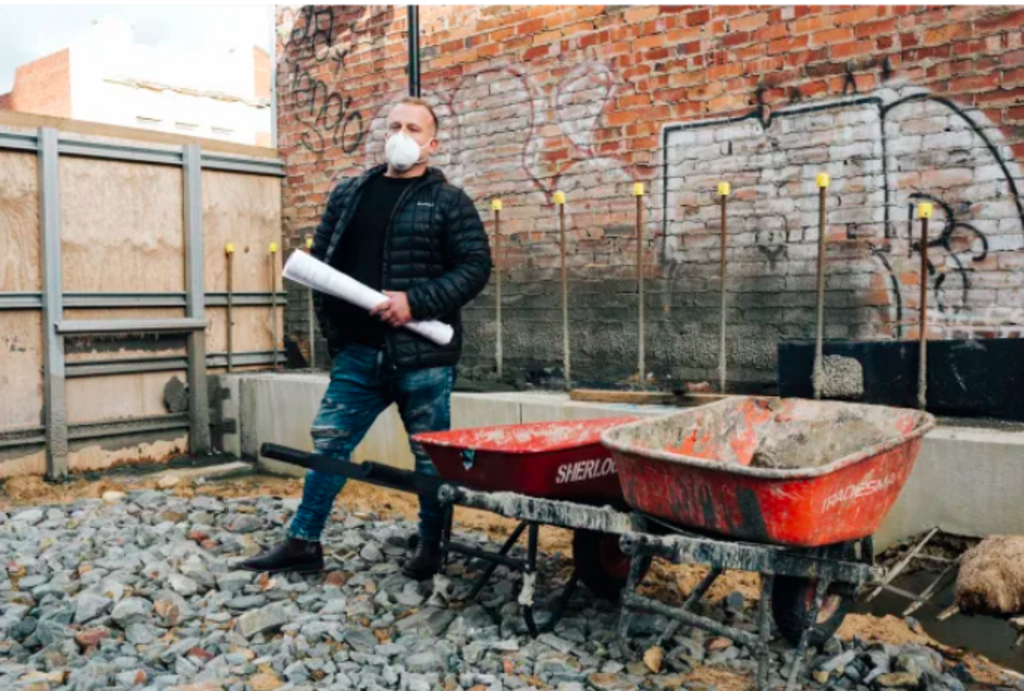
More than 166,000 high-rise construction jobs at risk
More than 166,000 workers are at risk of being stood down from high-rise construction projects in Victoria as a result of new controls due to take effect from midnight on Friday in an effort to curb the spread of COVID-19.
Project data analysed for The Australian Financial Review shows that Greater Melbourne, the region of Victoria subject to the tightest restrictions, accounts for 735 of the state’s 832 largest projects and employs more than 222,000 people on them.
“There are probably around 222,000 jobs in Melbourne at the moment that are dependent on getting on with building,” said Kerry Barwise, consulting economist for the Australian Construction Industry Forum (ACIF) industry body.
“If you take the government’s announcement at face value, 75 per cent of those are at risk.”
Construction – like many other industries in the pandemic-hit state – is trying to make sense of the sweeping rules laid out on Monday that include reducing staff on large construction projects to a “practical minimum” of no more than 25 per cent of their normal workforce for the next six weeks.
There are concerns not just about staffing numbers but also about the separate ruling that people can work only on one site over the stage four restrictions.
Builders say that could halt the specialists and skilled tradespeople, who normally work across several sites.
‘Just crazy’
“I’m getting calls left, right and centre. It’s just crazy at the moment,” builder Christian Bonanni said.
Mr Bonanni is a director of his family’s construction company, which is building four childcare centres across suburban Melbourne worth a collective $6 million.
“On one, my painter is finishing this week and the next childcare centre in line is ready for them on Monday morning. Can he go to the next site?”
With Bonanni Construction Group also subject to the five-workers-only-on-site requirement, Mr Bonanni is now also juggling all his projects and the workers coming and going.
“Just on one little site, I had to shift something that was supposed to happen next Wednesday to the following Monday. There’s six [extra] days just on that one job,” he said.
“This is going to affect my program on all my jobs.”
The rules announced by Premier Daniel Andrews failed to take into account the practical measures that building sites were already applying to reduce transmission risks of the virus, ACIF’s Mr Barwise said.
“Inflexible, hard rules that cut across that management should be avoided,” he said.
“They’re not necessarily enhancing safety, but they’re definitely limiting the capacity to do the job. They should take better account of the risk management strategies which are being applied.”
Only a broad indicator
Construction employs about 340,000 people in Victoria. ACIF’s calculations of all people normally working on site are not a snapshot of activity this week. Some projects on the list will already be close to completion and will not have the full number of people working on site; others may not have stepped up to their full complement.
“It’s a broad indicator of the magnitude of construction workers who are likely to be caught up in this,” Mr Barwise said. “It’s not a precise estimate of the exact numbers of people.”
The order to stand down three-quarters of staff on larger projects, which the state government defined as four storeys or more, would put huge cash-flow pressures on builders, Slattery quantity surveyor Mark Pickerill said.
“Closing down from a COVID point of view makes sense, but from a builder’s point of view they’ve got to be prepared to open,” Mr Pickerill said.
“When the government goes ‘COVID’s no longer an issue’, they have to go from 25 per cent up to 100 per cent of the workforce. As a builder or a subcontractor, you’ve got to hold your staff so you can start doing that again.”
The supply chain would also be hit as materials and plant ordered and delivered would now be delayed in their use on-site, construction lawyer Bryce Anderson said. “Suppliers will no doubt want to be paid. However, contractors will wait longer to recoup payment in payment claims which will affect cash flow.”











